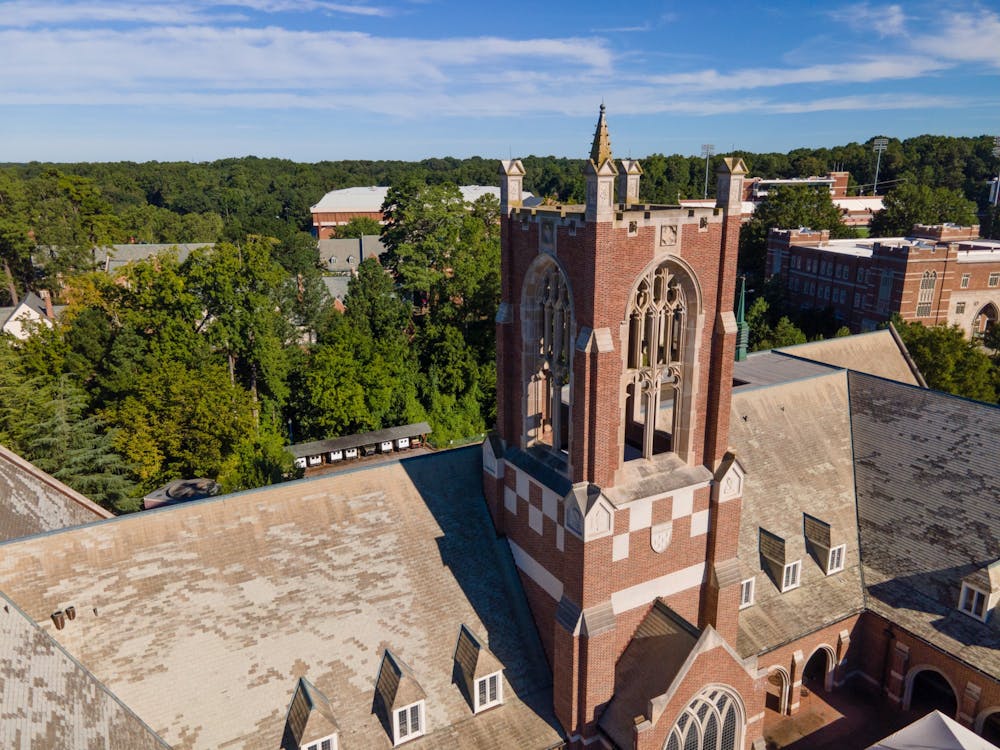A new map created by UR’s Digital Scholarship Lab continues their work on redlining in Mapping Inequality and shows that historically redlined neighborhoods have higher rates of chronic diseases that are risk factors for contracting COVID-19.
The map, “Not Even Past: Social Vulnerability and the Legacy of Redlining,” compares data from maps by the Home Owners’ Loan Corporation (HOLC) from the 1930s with current Centers for Disease Control Social Vulnerability Index scores, according to the map webpage. Social vulnerability refers to a neighborhood's capability to withstand natural and human-made disasters with the resources they have, according to the National Community Reinvestment Coalition's webpage.
UR Digital Scholarship Lab Director Rob Nelson helped design and develop the application, according to the project's webpage.
“You can basically name any number of manifestations of inequality today and chances are they're going to correlate with redlining,” Nelson said.
The map was a collaboration between the UR Digital Scholarship Lab, the National Community Reinvestment Coalition and the University of Wisconsin, Milwaukee Joseph J. Zilber School of Public Health, according to the NCRC's webpage.
Mapping Inequality was created by teams from the Digital Scholarship Lab, Virginia Tech and the University of Maryland Digital Curation Innovation Center, according to its website.
Redlining is when predominantly minority neighborhoods are outlined to signal to lenders to deny credit, according to the NCRC’s project webpage. Redlining practices were explicitly racist, especially toward African Americans, and were in widespread use until laws against discriminatory housing were passed in the late 1960s, NCRC Director of Research and Evaluation Jason Richardson said in an interview with The Collegian.
The HOLC maps graded neighborhoods based on their racial makeup and were in widespread use for decades, Richardson said. They served as a source for the Federal Housing Administration, which continued the same redlining practices across the country, he said.
The Digital Scholarship Lab's map shows strong correlations between historically redlined neighborhoods and health, including higher rates of chronic disease such as asthma, diabetes, high cholesterol and stroke, all of which are risk factors for contracting COVID-19, according to the NCRC’s project webpage. The people living in historically redlined neighborhoods also typically have lower life expectancies, according to the NCRC's project webpage.
Nelson clarified that the project is not suggesting a causal relationship between redlining and certain health issues, as there are many causes for health disparities. However, the deeply ingrained disparities in historically redlined neighborhoods make it a fair conclusion to say that urban policies and systemic redlining play a crucial role in disparities, he said.
Richardson said the project's findings were distressing.
“You know, I sound really upbeat, but the results and the findings are terrible," Richardson said. "I mean, we're talking about a century following the creation of these maps, and still we see massive variations in every single public health indicator that we looked at."
Enjoy what you're reading?
Signup for our newsletter
The project initially was about the correlation between redlining and public health, but when the first studies came out explaining high-risk factors for COVID-19, their work became applicable to the ongoing pandemic, Richardson said.
“Not Even Past” was a natural follow-up to the Digital Scholarship Lab’s Mapping Inequality project, an online mapping archive of redlining materials used by journalists, academics and various organizations across the country, Nelson said.
The collaborators worked on the project between March and August, under COVID-19 lockdown restrictions, said Justin Madron, GIS project manager and analyst at the Digital Scholarship Lab.
The Mapping Inequality project and redlining work done by the Digital Scholarship Lab started years ago and has garnered a lot of attention in the media and academia, especially during the COVID-19 pandemic, Madron said. Recently, the project webpage reached one million views, Madron said.
Newly discovered redlining maps are being added to Mapping Inequality, Madron said.
The project would not have been possible without the work of students, Nelson said.
Madron said he had worked on the project since he came to the Digital Scholarship Lab in 2013.
“Being a GIS analyst, I never thought I would be working on something that had this big of an impact and [that] it would reach to this far," Madron said. "It's been a project of a lifetime for sure."
Madron and Nelson said they were happy with how their work had spread awareness of the legacy of redlining and been used to inspire other projects. For instance, a New York Times article on heat island effects used Digital Scholarship Lab spatial data to make its graphics, Nelson said.
“We’re hopefully contributing to that conversation [about race] and this kind of reckoning around race," Nelson said. "It's always just going to be, like, one small part contributing to these larger efforts, but I hope it does contribute to this larger effort."
Nelson was supposed to speak about his work on redlining in an Environmental Protection Agency internal speaker series on environmental justice on Sept. 15, he said. However, the series has been postponed because of an order from the White House for government agencies to stop race-related training, he said. A Sept. 4 memo from the Office of Management and Budget referenced a directive from Trump to stop any “un-American propaganda” trainings, which Nelson rejected in an email to Politico.
For the future, Nelson said he hoped to see the work done by the Digital Scholarship Lab on redlining used in education at the K-12 and college levels.
Contact newsletter director Eileen Pomeroy at eileen.pomeroy@richmond.edu.
Support independent student media
You can make a tax-deductible donation by clicking the button below, which takes you to our secure PayPal account. The page is set up to receive contributions in whatever amount you designate. We look forward to using the money we raise to further our mission of providing honest and accurate information to students, faculty, staff, alumni and others in the general public.
Donate Now



